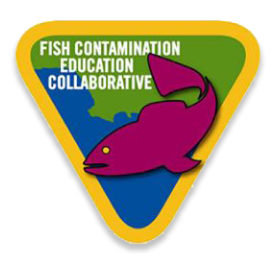What are the contaminated fishing areas?
View our What Fish Are Safe to Eat page to see which areas are contaminated.
Which fish can I eat?
View our What Fish Are Safe to Eat page to see which local fish are safe to eat
How can I safely prepare fish?
Follow the fish consumption advisories and recommended preparation and cooking practices, and help other family members do likewise. You can lower the possibility of developing health problems related to chemicals by reducing your exposures to chemicals in fish. You can do this by controlling which fish you eat, how often you eat fish, how much fish you eat, and which parts of the fish you eat.
Can you eat fish when you are pregnant?
Because some chemicals may be more harmful for certain groups of people like pregnant women and children, it is recommended that pregnant women follow fish consumption advisories that include specific recommendations for these groups.
During pregnancy and lactation, mothers can pass DDTs and PCBs on to their infants. These chemicals can then affect overall growth and development, and brain development and function.
Some children born to mothers with high amounts of PCBs in their bodies, as a result of eating fish with high levels of PCBs, showed delayed growth and development. However, the levels of PCBs in the fish eaten by these mothers were 5 to 10 times higher than levels of PCBs found in fish from the coasts of Los Angeles and Orange Counties.
What is mercury poisoning and how does it relate to fish?
Some fish and shellfish contain very high levels of mercury that may harm an unborn baby or young child’s developing nervous system. The risks from mercury in fish and shellfish depend on the amount of fish and shellfish eaten and the levels of mercury in the fish and shellfish. Therefore, the Food and Drug Administration and the Environmental Protection Agency are advising women who may become pregnant, pregnant women, nursing mothers and young children to avoid some types of fish and eat fish and shellfish that are lower in mercury.
By following these 3 recommendations for selecting and eating fish or shellfish, women and young children will receive the benefits of eating fish and be confident that they have reduced their exposure to the harmful effects of mercury.
1. Do not eat Shark, Swordfish, King Mackerel, or Tilefish because they contain high levels of mercury.
2. Eat up to 12 ounces (2 average meals) a week of a variety of fish and shellfish that are lower in mercury. Five of the most commonly eaten fish that are low in mercury are shrimp, canned light tuna, salmon, pollock and catfish. Albacore ("white") tuna has more mercury than canned light tuna, so when choosing your two meals of fish and shellfish, you may eat up to 6 ounces (one average meal) of albacore tuna per week.
3. Check local fish advisories about the safety of fish caught in your local lakes, rivers, and coastal areas. If no advice is available, only eat up to 6 ounces (one average meal) per week of fish you catch from local waters.
What are the health effects of eating fish contaminated with DDTs and PCBs?
The more contaminated fish you eat over your lifetime, the greater your risk of developing health problems related to DDTs or PCBs. Eating fish with DDTs and PCBs does not make people sick right away. However, these chemicals can build up and stay in your body for a long time. This might cause health problems later.
Health effects associated with DDTs and PCBs include: cancer, liver damage, and effects on the immune, endocrine, neurological, and reproductive systems. Many effects have only been shown in animal tests, but could occur in humans. Health risks resulting from exposure to these chemicals may also be higher for infants and young children. During pregnancy and lactation, mothers can pass DDTs and PCBs on to their infants. These chemicals can then affect overall growth and development, and brain development and function.
Some children born to mothers with high amounts of PCBs in their bodies, as a result of eating fish with high levels of PCBs, showed delayed growth and development. However, the levels of PCBs in the fish eaten by these mothers were 5 to 10 times higher than levels of PCBs found in fish from the coasts of Los Angeles and Orange Counties.
I have been eating fish caught off the coast for years, how is this affecting my health now?
It is difficult to say if and how your health is being affected now. This is because whether or not you experience health effects from eating locally caught fish depends on how much fish you eat, the type of fish you eat, which parts of the fish you eat, and how often these fish are eaten. Generally if you eat fish within the recommended amounts, you minimize your chances of developing health problems related to chemicals that might be in the fish.
Other factors such as genetics, your total diet, and overall lifestyle also influence your health. If you eat white croaker from the LA coast on a weekly basis, for example, you may have high levels of PCBs and DDTs in your body, but that does not mean that you would experience health effects.
Should senior citizens be concerned?
Yes, senior citizens should be concerned because these chemicals might decrease how well they are able to fight illnesses. It is best for senior citizens to follow the fish consumption advisories and recommended preparation and cooking practices, and to help other family members do likewise. You can lower the possibility of developing health problems related to chemicals by reducing your exposures to chemicals in fish. You can do this by controlling which fish you eat, how often you eat fish, how much fish you eat, and which parts of the fish you eat.


